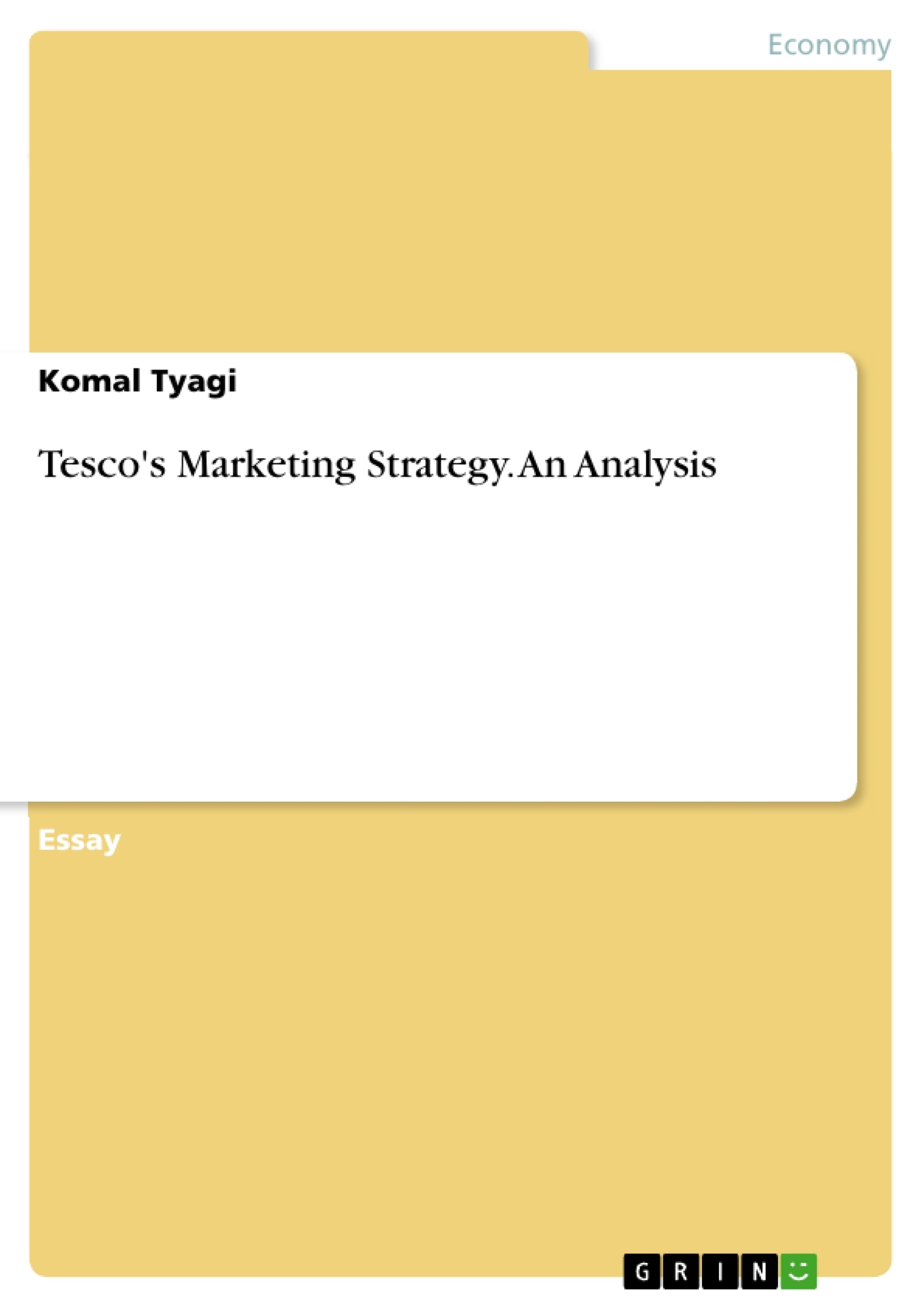This paper is an analysis of Tesco's strategic marketing.
Tesco is a customer centric organisation and believes in customer service. As they quote "Serving our customers, communities, and planet a little better every day" Keeping customers at the heart of what we do.
This reflects a holistic view of the organization which not only focusses on its customers but also on its suppliers, communities, and the countries in which they operate. Their core value reflects its commitment towards the overall society by contributing towards creating a better planet every day in form of their longstanding commitment and the campaign towards reducing carbon footprint.
Table of Contents
- Tesco-Introduction & Organisational Profile
- Tesco Core values & Strategic pillars
- Tesco -Envoirmental Analysis-Pestle Factors
- Political Factors
- Economic Factors
- Social Factors
- Technological Factors
- Environmental Factors
- Legislative Factors
- Tesco- Company Analysis- SWOT
- Strengths
- Weakness
- Opportunity
- Threats
- Tesco-Ansoff matrix
- Tesco-7 Ps of Marketing Mix
- Conclusion
Objectives and Key Themes
This strategic marketing plan for Tesco aims to analyze the company's current position in the market and develop strategies for future growth and success. The plan explores Tesco's core values, strategic pillars, and environmental analysis, and identifies strengths, weaknesses, opportunities, and threats for the company. It utilizes the Ansoff matrix to devise growth strategies and examines the 7Ps of marketing mix to understand Tesco's approach to marketing.
- Analyzing Tesco's organizational profile, core values, and strategic pillars
- Exploring Tesco's external environment through a PESTLE analysis
- Assessing Tesco's internal strengths and weaknesses through a SWOT analysis
- Developing growth strategies using the Ansoff matrix
- Examining Tesco's marketing mix and its effectiveness
Chapter Summaries
The first chapter introduces Tesco as a leading multinational retailer with a strong global presence. It highlights the company's history, growth, and current position in the market. The second chapter delves into Tesco's core values and strategic pillars, emphasizing its customer-centric approach and commitment to social responsibility. The third chapter analyzes Tesco's external environment using a PESTLE framework, focusing on political, economic, social, technological, environmental, and legislative factors that influence the company's operations. The fourth chapter provides a detailed SWOT analysis of Tesco, examining its strengths, weaknesses, opportunities, and threats. This chapter explores key factors that contribute to Tesco's competitive advantage and challenges it faces in the market.
Keywords
The key terms and concepts explored in this strategic marketing plan include: multinational retailer, customer-centric, strategic pillars, PESTLE analysis, SWOT analysis, Ansoff matrix, 7Ps of marketing mix, competitive advantage, market share, growth strategies, environmental factors, social responsibility, and sustainability. The plan focuses on understanding Tesco's position in the market, identifying key factors influencing its performance, and developing strategies for future growth and success.
- Arbeit zitieren
- Komal Tyagi (Autor:in), 2022, Tesco's Marketing Strategy. An Analysis, München, GRIN Verlag, https://www.grin.com/document/1334582



